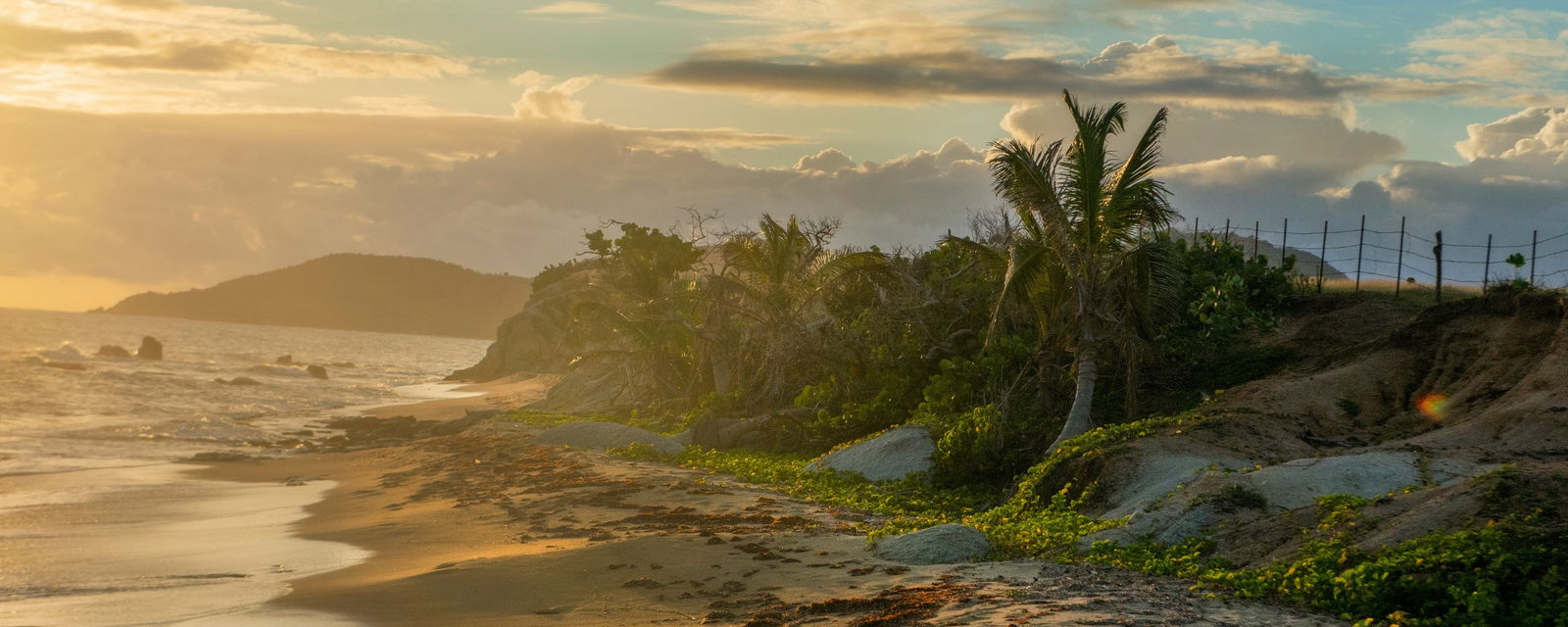


The eastern coast of Puerto Rico (San Juan excluded) is filled with a variety of natural wonders. El Yunque National Forest is a tropical rainforest perfect for natural getaways while the small island of Vieques to the east is perfect for snorkeling and other strange and unique marine experiences. The wild horses on the island add an unexpected bucket list checkmark because who thought they’d ever see horses in the wild!?
Few Americans have actually been to a tropical rainforest but Puerto Rico’s El Yunque National Forest is a perfectly accessible forest to explore, near San Juan, and well protected. Daytrips are easy to coordinate but we recommend full immersion; find a jungle ecolodge and stay there for a couple nights, taking in daily hikes and falling asleep to the surprisingly noisy surroundings.
Flamenco Culebra and Vieques are two smaller islands off the East Coast of Puerto Rico and both are worth visiting. A handy 30-minute ferry ride takes you from mainland to Vieques where you’re dropped at a convenient location so that you can start exploring immediately. The western part of the island is restricted, but there is an accessible wildlife refuge on that side as well. Mosquito Bay, definitely not an inviting name, is where the strongest volume of bioluminescence can be found.
You’ve not been to Puerto Rico until you’ve experienced an authentic pig roast. And, unless you make friends with a Puerto Rican family of 50+, your best opportunity to experience such an authentic meal is in Guavate. It’s about an hour south of San Juan where you’ll find this mountain town that lines the streets with restaurant sponsored pig roasts. Head there on the weekend and find a joint with plenty of hog left and live music and you’ll never want to leave.

Puerto Rico's east coast winter, from December to February, offers warm and pleasant weather with temperatures ranging from the mid-70s to low 80s Fahrenheit. It's an ideal time to visit this region of the island as it allows for enjoyable beach days and outdoor activities. Winter is perfect for exploring the El Yunque National Forest, a tropical rainforest with hiking trails, waterfalls, and breathtaking views. Visitors can also indulge in water sports like surfing and paddleboarding along the beautiful coastline.

Spring in Puerto Rico's east coast, from March to May, brings slightly warmer temperatures with highs in the low to mid-80s Fahrenheit. The landscapes remain lush and green from the previous rainy season. Spring is ideal for exploring the towns of Luquillo and Fajardo, known for their stunning beaches and delicious seafood restaurants. Visitors can also take boat tours to the nearby bioluminescent bay in Fajardo, where the water glows with a magical blue light at night.

Puerto Rico's east coast summer, from June to August, marks the beginning of the rainy season. While it can be hot and humid with temperatures in the mid-80s to low 90s Fahrenheit, it also provides a refreshing respite from the dry season. Summer offers opportunities for experiencing local culture and attending festivals and events. Visitors can explore the town of Naguabo and its Malecón, a seaside boardwalk with beautiful ocean views and seafood eateries.

Fall in Puerto Rico's east coast, from September to November, is the peak of the rainy season. The weather remains warm and humid, with temperatures ranging from the mid-70s to low 80s Fahrenheit. Despite the rains, fall is an excellent time to experience the region's natural beauty and take advantage of lower tourist crowds. Visitors can explore the Humacao Nature Reserve, a wetland area perfect for birdwatching and kayaking. Fall is also an ideal time to participate in local events and taste traditional Puerto Rican dishes at the region's restaurants and food stands.
